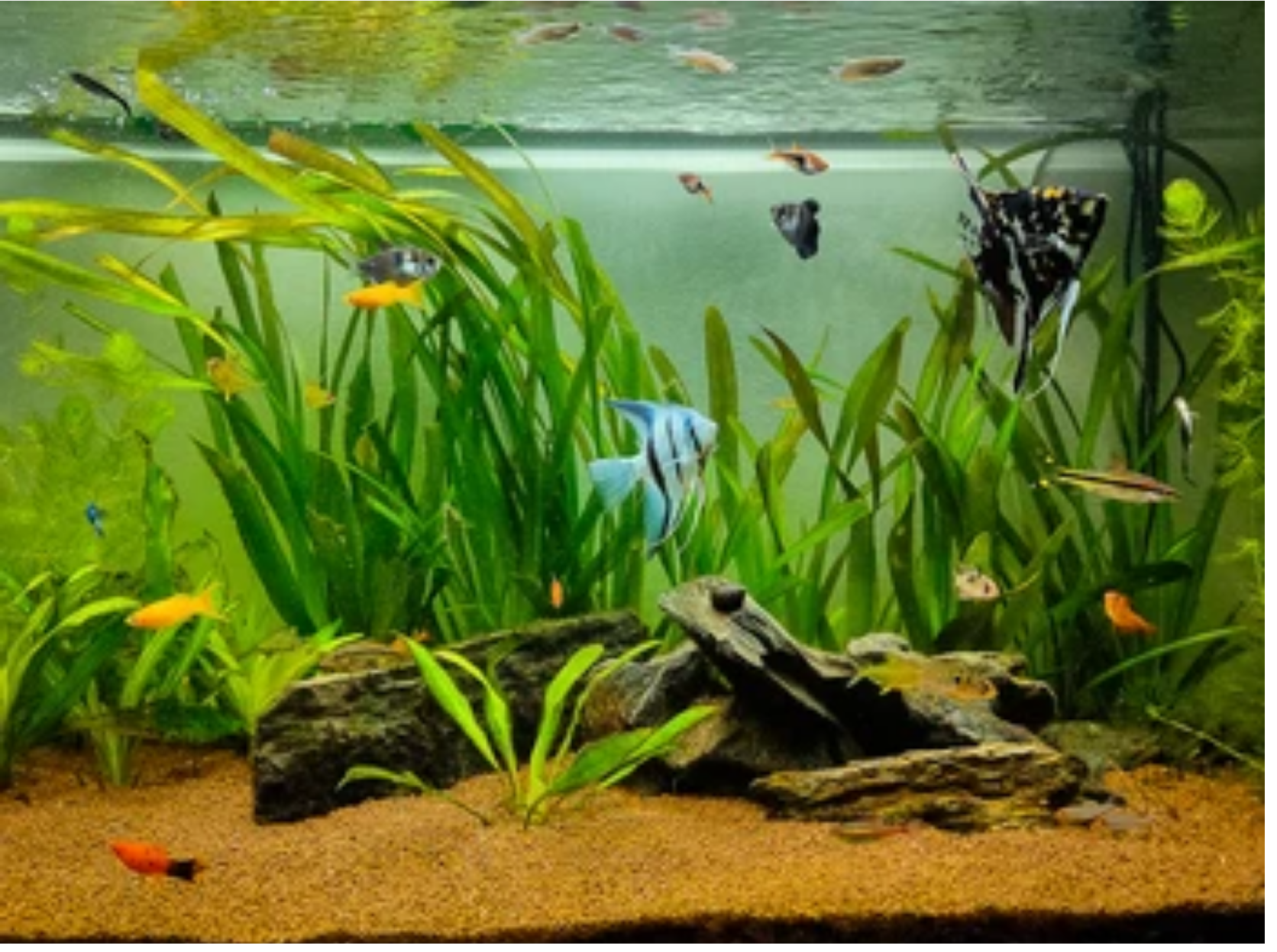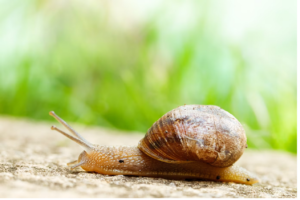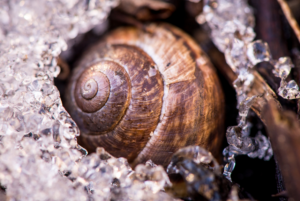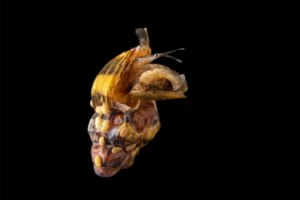Snails are a popular addition to tanks, not only for their aesthetic value but also for their ability to help balance the tank’s ecosystem. They are well-known for being excellent algae eaters and can also consume leftover food that falls to the bottom of the tank. So, you may be wondering, how effectively are they at cycling your tank?
You cannot cycle a fish tank with snails; however, they can accelerate the process. Snails are excellent feeders, and their waste releases ammonia into the tank. This ammonia is a food source for bacteria that convert it into nitrites and nitrates, which are less harmful to the tank’s inhabitants.
This article will focus on the tank cycling process and the role of snails in it. Specifically, it will explore how bacteria in the tank interact with snails. By reading on, you’ll gain valuable insights into properly caring for snails in your tank.
The Role of Snails in Aquarium Cycling
Snails can speed up the cycling process in your tank. While any animal added to the tank can help in this regard, it’s important to consider the bioload.
Hardy fish, for instance, release more ammonia through their waste but also have higher bioloads.
Snails are a desirable choice for cycling because they have significantly lower bioloads.
What Is Aquarium Cycling?
Aquarium cycling involves increasing the population of beneficial bacteria in your aquarium by introducing the following:
- Fish
- Snails
- Other pets
The primary goal is to maximize the number of beneficial bacteria that convert nitrogenous waste products into less toxic forms.
The two main types of beneficial bacteria involved in aquarium cycling are:
- Ammonia Oxidizing Bacteria (AOB)
- Nitrite Oxidizing Bacteria (NOB)
AOB converts ammonia into nitrites, and NOB breaks down nitrites into nitrates. While high levels of ammonia and nitrites harm aquatic life, nitrates benefit plants as they promote growth.
During water changes, excess nitrates are removed, preventing their concentration from reaching harmful levels.
In addition to fish, snails can aid in the cycling process by producing ammonia through defecation and urination.
However, it is recommended to add at least 5 snails to your tank to generate enough ammonia to support the growth of beneficial bacteria.
By increasing the population of beneficial bacteria, your aquarium becomes a more suitable environment for your pets.
I wanted to share an article with you that I think you’ll find interesting. It’s about a unique question that you may not have considered before: Can Snails Live In High Ammonia?
The article explores the possibility of keeping snails in aquariums with high levels of ammonia and whether or not this is a safe and sustainable option for these creatures.
Why Snails and Not Other Animals?
You may wonder if you can add other animals instead of snails to boost ammonia production in your tank.
While bigger fish produce more excretion, they also have a high bioload, which means they produce an excess of ammonia that beneficial bacteria cannot break down. Therefore, snails are a better option for promoting the growth of beneficial bacteria in your aquarium.
You may also be considering adding extra fish food to your tank to increase ammonia levels. While this is an easier method, it can lead to the rapid growth of algae in your tank.
Algae thrive on organic and inorganic matter, and the presence of decomposing food in your tank can accelerate their growth, creating a major problem for aquarists.
Snails are an excellent solution to this problem because they not only produce ammonia through their waste but also feed on algae and decomposing food in your tank.
Certain species of snails, such as Nerite and mystery snails, are exceptional algae eaters, making them ideal for reducing algae while simultaneously producing ammonia.
By using snails, you can promote the growth of beneficial bacteria while reducing algae growth, killing two birds with one stone.
What Is the Ideal Time to Cycle Your Tank?
Before adding any fish or other pets to your aquarium, it’s crucial to ensure adequate beneficial bacteria in the water to handle the ammonia the pets produce. If you introduce fish into the tank without properly cycling it, they will likely die due to chemical imbalances.
To kickstart the cycling process, add a small amount of food to your tank. As the food decomposes, it will release ammonia, which will begin to nourish the colony of beneficial bacteria.
However, it’s important to monitor the nitrite levels in your tank regularly. Over time, the levels should decrease towards 0ppm, but achieving this balance can take up to 2 weeks.
Introducing snails into your tank can help speed up the cycling process by up to a week. It’s best to add the snails a few days after adding food to the tank.
However, it’s essential to introduce only a small number of snails (such as five) and ensure they won’t reproduce in the water.
Nerite snails are an excellent option since they do not reproduce in freshwater. Snail species that reproduce in freshwater, such as assassin snails, can carry the risk of a snail infestation in the tank, which can be devastating for your fish.
It’s important to maintain a delicate balance between the amount of food in the tank and the number of snails. Ensure that there is enough food for the snails to eat, but don’t overdo it, as excessive food will overwhelm the snails and cause them to release too much ammonia, which can be toxic for your fish.
Providing the right amount of food will ensure that your snails thrive and produce enough ammonia to promote the growth of beneficial bacteria without harming your fish.
I highly recommend DrTim’s Aquatics Ammonium Chloride Solution for Fishless Cycling, available on Amazon. This powerful, eco-friendly solution is perfect for sanitizing new aquariums or cycling water without fish or coral. With just four drops per gallon, this ammonium chloride solution quickly removes harmful toxins, creating a natural biofilter to eliminate nitrite and toxic ammonia.
| Preview | Product | |
|---|---|---|

|
DrTim’s Aquatics Ammonium Chloride Solution for Fishless Cycling – 4 oz., Treats 200 gal. – Fish… | Check Price |
How to Get Rid of Snails in Your Fish Tank Without Harming Fish
There are several methods to remove snails from a fish tank without harming the fish:
- Manual removal: This method involves physically removing the snails from the tank using a net or tweezers. You can remove the snails during water changes or use a bait trap to catch them.
- Chemical treatments: Some chemical treatments, such as copper-based medications, can effectively remove snails. However, these treatments can harm fish and other aquatic life, so they should be cautiously used.
- Natural predators: Adding natural predators to the tank, such as assassin snails or certain fish species, can help control the snail population. However, it’s important to research the predator’s compatibility with your fish and tank environment before adding them.
- Reduce food source: Snails thrive on excess food, so reducing the amount of food you feed your fish can help reduce the snail population. Be sure not to starve your fish but adjust the feeding schedule and amount to prevent excess food from accumulating in the tank.
It’s important to choose a method that’s appropriate for your tank’s environment and population. Always research any treatment or addition before introducing it to your tank and closely monitor the fish and snail populations during and after the treatment.
Closing Remarks
While snails can aid in tank cycling by producing ammonia, introducing them requires careful consideration. They serve as a food source for beneficial bacteria that convert ammonia to less toxic nitrates for aquatic life.
However, it’s crucial to select the appropriate snail species and closely monitor nitrite levels. Any oversight could lead to a snail infestation or unacceptable toxicity levels in your tank.
Therefore, it’s imperative to be cautious and attentive to ensure that snails contribute positively to your tank ecosystem.
Frequently Asked Questions
Are snails good for cycling tanks?
While some freshwater snails are hardy and can contribute to the cycling process, it’s generally not advisable to rely on snails alone for tank cycling. While they produce waste and contribute to the tank’s ecosystem, other factors, such as beneficial bacteria and water parameters, are crucial to establishing a healthy aquarium environment.
Can mystery snails cycle a tank?
Mystery snails alone cannot cycle a tank. They do not contribute significantly to the nitrogen cycle. They are primarily scavengers of leftover food and detritus in the aquarium. To establish a healthy and stable nitrogen cycle, you must introduce beneficial bacteria to the tank, such as by adding a source of ammonia or using a bacterial supplement.
Can snails start the nitrogen cycle?
Snails alone cannot start the nitrogen cycle in an aquarium. While they produce waste, their waste alone is insufficient to establish a healthy nitrogen cycle. To start the nitrogen cycle, you need to introduce a source of ammonia, either by adding fish or using a pure ammonia source, and then wait for beneficial bacteria to establish themselves and convert the ammonia into nitrite and then nitrate.
How do you start the nitrogen cycle without fish?
You can introduce a source of pure ammonia to the tank, such as ammonium chloride. Add enough ammonia to produce a concentration of 2-4 ppm (parts per million). Then, wait for beneficial bacteria to establish themselves and convert the ammonia into nitrite and nitrate. You can monitor the progress of the cycle using a test kit to measure ammonia, nitrite, and nitrate levels.
Can snails in a fish tank reproduce?
Snails in a fish tank can reproduce. Most species of snails are hermaphroditic, meaning they have both male and female reproductive organs and can fertilize their own eggs. As long as there is enough food and a suitable environment, snails can reproduce rapidly and become a pest if their population is uncontrolled.
Sources
- PlantedTank.net: Snails in a Cycling Tank
- Golias.net: Experiments: Algae and Dissolved Organic Matter (DOM)
- NCBI: Community Analysis of Ammonia and Nitrite Oxidizers during Start-Up of Nitritation Reactors
- Fishlore: Can Snails Be Used to Cycle a Tank?
- MyFishTank.net: Mystery Snail Bioload
- My Aquarium Club: Snails & Bioload



